|
Some days I will wear a kilt, and that despite I’m not Scottish or have any Scottish roots.
I appreciate the comfort and variety, it provides. I like the versatility and the way it looks.
Some few will praise me for wearing the kilt; most people just seem to find it OK. So no big deal about that.
It more or less started back in the mid nineties during a vacation in Scotland and before the Internet.
One day I dropped in on a kilt maker’s store in Edinburgh. The purpose was to get some basic information on highland wear for a business case study had in mind and to be used in connection with my teaching in marketing research and strategy.
The year before, I had got the inspiration to the case study from “The Scotch House” in London near Harrods’. The store was selling branded goods like Pringle, Burberry etc. but on the ground floor they also had,
a few steps up, a veritable and very distinguished highland department as a shop-in-shop.
To me this highland department was “selling things you don’t need” – a slogan which, by the way, years later a major Danish department store unsuccessfully (and quite understandable) tried to establish as a positive thing.
|
The business case study, named ScotchWear, is about a thought-of Scottish company selling high quality Scottish products for men and women through its own stores and under the brand ScotchWear. The range comprises sweaters, shirts, jackets, trousers, skirts, bags, ties, belts and on top of that highland wear (kilts and accessories).
ScotchWear stores are already in Inverness, Edinburgh, Glasgow, Aberdeen and London.
Now the management of ScotchWear considers whether to establish stores with probably the same concept on the European continent. Copenhagen might be a possibility. Could it function as a test market ...?
|
Out of my visit did come the needed information on what I considered the “impossible” part of the case study. But it also ended up with me being measured for and persuaded to try on a kilt.
I immediately got a feeling that a kilt was extremely comfortable to wear, that there was nothing feminine about it and that it was certainly different to men’s ordinary garments. In some way I got hooked, so to say.
I didn’t buy the kilt, then. It was quite expensive and what should I use it for, even if I was told that they had a lot of non-Scottish customers from a lot of countries?
When I left I had with me a business card from the store, however, with my measures written on it, just in case.
One or two years later, having got access to the rather new Internet, I was considering a revision of the business case study by including e-trade. During my surfing I happened to come to a site where a kilt was no more than £39.
In order to have an indication of shipment cost I had to fill out the order and payment forms and thus I reached to the point where clicking “Enter” would mean that I had bought myself a kilt plus some accessories.
Shall, shall not? It wouldn’t ruin the family economy in any way, but… Well, on the Internet I had also seen that non-Scots really did wear kilts, or wanted to.
To put it short I clicked “Enter”. Less than two weeks later I received my order.
The quality of my kilt was not quite up to the standards of the one I had tried on in Edinburgh, but being a non-Scot with probably no possibilities to wear a kilt at dress up situations it made the point.
Later I have supplied with some better and more expensive kilts, but without access to cheap kilts I and many others should probably never have started kilt wearing, a thing many fine kilt makers should take into consideration before complaining about cheap kilts.
|
| |
|
The Scottish kilt market
Looked
at from outside, these years a polarization on the market is taking place.
Not unlike a lot of other product markets the mid-price segment is under pressure.
Many of the actors have simply stuck in the middle and have already or are about
to leave the marketplace. You see them disappear on the Internet. Others have
(cleverly) merged in an attempt to achieve a stronger position than when
working individually.
Top
quality kilt makers with a very good reputation and high priced products seem
to be doing well on the market. Geoffrey Tailor, Hector Russell and Kinloch
Anderson are examples.
Obviously a growing low-price kilt market is dominated by one vendor, Gold Brothers, offering
high value for money, backed up by a very well-organized and efficient customer
service. Gold Brothers might have recognized a big potential in first time
customers buying a cheap kilt and as their second a better and more expensive
one. At least they are making entries on the mid-price market as well.
It
is not difficult to understand that old traditional kiltmakers are not happy
about the competition and are making all kinds of attempts to bring Gold
Brothers into a bad light.
But considering the importance of a growing market, perhaps they should rather be
grateful and try to find themselves a niche on the market big enough for them
to survive.
The
alternative, that of kilts being too expensive to most men, could very well
mean that kilts would become merely rental business and eventually lead to the
disappearance of the kilt.
The
kilt market has also some resemblance with the furniture market where you have
most expensive designer furniture along with much cheaper Ikea, whereas the
middle of the market has to a great extent disappeared.
|
|
|
Can men wear anything but trousers?
|
Men haven’t always been wearing trousers. The Roman
Empire was created by men in skirt like garments, one type being floor length
(toga), and another one looking like a mini skirt (tunica). Jesus never knew of
trousers.
When trousers were invented it was not with the purpose of having men look more
masculine, but for a lot of tasks trousers were more practical. Think of
horse riding, ladder climbing, war fare etc., many of these, however, being of less relevance
today.
Till our days, in the developed world, only the kilt
has survived as a manly non-trouser garment.
|
|
What is a kilt?
|
A kilt is a
knee-length hanging or skirted garment with deep pleats at the rear. It had its origin in the
Scottish highlands about 400 years ago. It was by then a rather primitive garment used for daily wear and had little resemblence with the kilt we know today.
Not until the 19th century
Scottish lowlanders, counting for more than half of the Scottish population, would wear a kilt at all, by the way.
|
|
Do I have to be
Scottish to wear a kilt?
|
No, in recent years
more and more men, no matter their nationality, colour and heritage, will
wear a kilt and even more men should like to. The movie Braveheart (1995) and, since 2nd half of the nineties, the Internet have contributed to this development.
|
|
Is a kilt a skirt?
|
According to The European Union
Statistics Bureau, Eurostat, the kilt is not a skirt but a men’s
special garment.
Some people shall never stop calling it a skirt, however. If so don't get upset. Quite a few
people cannot tell green from red either.
And after all, the kilt is kind of a skirt, even if a very special one.
|
|
Do women wear kilts?
|
Women will mostly wear kilted skirts that are lighter, use less yardage and have thinner straps and buckles. Kilted skirts may also be longer or shorter than kilts.
|
|
Who will wear a
kilt?
|
Still a small but growing segment of men
in a lot of countries with and without a kilt tradition and with and without Scottsih heritage. Demographically they
in all respects equal men in general, it seems. Therefore the difference
is the kilt and nothing but the kilt. By the way, kilt wearing has nothing to do with sexual preferences.
Let's put it straight: Any man can wear a kilt.
|
|
Why should I wear a
kilt?
|
A kilt is
probably the most comfortable manly
garment available. Just think of anatomy.
It is versatile. A casual kilt can with a few
accessories be upgraded to rather formal functions, not possible with blue
jeans or shorts. In fact often just folding up kilt socks shall make it. It is
also a year round garment due to so-to-speak built-in ventilation.
It is different, the manly wardrobe in itself
not being the most inspiring in the world.
It looks good. That is my opinion. And I like the tartans and so might you.
It provides
a lot of variety due to thousands of tartans available and the fact that
you with the kilt itself get an addition to your wardrobe, because you no
longer have to wear trousers all the time.
You stand out from the crowd, but far less
than you might fear - or hope - for.
Health aspects might apply, again due to anatomy and form follows function aspects. Also a better sun protection compared to shorts should be mentioned.
For Scotsmen and men with Scottish roots, heritage will play an important role, especially in the US.
|
|
When and where and to replace what?
|
In
theory, at least, you can wear your kilt every when and everywhere you feel
like it and when appropriate.
In practice non-Scots tend to use the kilt as informal casual wear in their spare time.
The working place is to my opinion not appropriate for kilt wearing. Here you are not supposed to stand out because of your way of dressing. But for theater, restaurants etc. you can, of course, wear a kilt.
To
Scotsmen and men with Scottish roots, formal wear
will often play a major role. Examples are weddings and other events where white or blacktie is called for, and Scottish gatherings/highland games.
That
might also influence their choice of (first) kilt, i.e. they should probably demand
more expensive kilts than men who shall only or primarily wear their kilts for casual
functions.
|
| Isn't a kilt very expensive? |
It can be, but fortunately it does not have to, at least not for casual wear. Here a rather cheap kilt will do.
Just make sure you buy a kilt and not a tartan skirt.
As said before,
the availability of cheap kilts might be the condition for men starting
wearing kilts and for a growing kilt market.
|
|
What about my
surroundings?
|
People who don’t
know you couldn’t care less how you look or how you dress. Your relatives and people in your neighbourhood will soon get accustomed to it.
|
|
What if I do
something wrong?
|
Here we talk casual
wear, not national dress. Accordingly you can and should forget about most
and often rigid rules, apart from a general proper appearance. And honestly,
how likely is it that you shall meet an expert?
|
|
Is it true?
|
The inevitable
question. Be sure the truth is YES, NO and DEPENDING ON. Whatever your
choice, better keep it a secret. What has kept the kilt very much alive might
be this fascination about whether or not. You are the one to know, and your wife the one to find out. For others it is only to guess.
In Scottish kilted regiments the use of underwear was (is still?) forbidden. Therefore it is called going regimental or commando - in case it is true.
|
| What about tartans? |
|
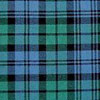
|
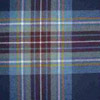
|
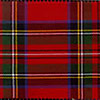
|
There are clan tartans for members of Scottish clans and there are district and universal tartans for men without clan affiliation.
No law forbids you to wear a certain tartan, however. Provided you wear your kilt in a proper way hardly anyone should object, should you be seen wearing "his" tartan.
*) These tartans are absolutely "free" to use.
Campbell Ancient, Gunn Weathered, MacGregor and Ramsay are clan tartans, but if you prefer them or other clan tartans, buy them and do wear them confidently whether entitled to them or not.
|
|
Campbell Ancient
|
Holyrood*
|
Royal Stewart*
|
|
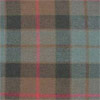
|

|
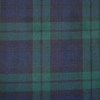
|
|
Gunn Weathered
|
Caledonia Ancient*
|
BlackWatch*
|
|
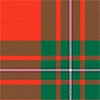
|
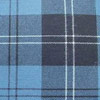
|

|
|
MacGregor
|
Ramsay
|
Stewart Black*
|
|
|
|
What should Scotsmen
think?
|
Only a handful of traditionalists might be against non-Scots wearing a kilt.
Making tartan fabrics and highland wear is a living
for a lot of Scotsmen. The more they sell the better.
|
|
Should I try to look Scottish?
|
No. To non-Scots the kilt is just a comfortable, versatile and innovative garment. Accordingly you should, to my opinion, also avoid accessories too much connected with Scottish national dress like the bonnet. |
|
Do other people think I'm Scottish?
|
It depends on where you are living, I suppose. In Scandinavian countries you are always addressed in the local languages, indicating that you are regarded just a man wearing a kilt.
|
| Should I strive for eventually giving up trousers? |
No certainly not. I myself should never give up trousers and shorts. But I shouldn't be without my kilts either. Isn't variety the spice of life?
|
|
What would be the best season of the year to wear a kilt?
|
In most countries you can simply wear it year-round. At temperatures between approx. -3 and 30 C it is perfect.
In winter only your knees have to be uncovered and they don’t
freeze. The kilt itself with its four to seven meters of fabric as well as the
kilt hose will keep the remaining parts of your legs efficiently insolated.
In summer
the kilt is protecting against heat - and sun. In fact you’ll often feel more
comfortable than when in shorts.
Add to that that in a kilt you are at all times better
dressed up. Where you should not be at ease wearing shorts you can without
problems wear the kilt. That is what I call versatility.
|
[go to top of the page]
|
|
Examples of kilts
|
|
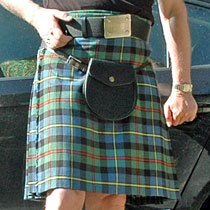
|
|
Casual poly viscose kilt from Heritage of Scotland. About £65 including shipping. Shown with plain day leather sporran. Tartan is MacLeod of Harris Ancient. Original kilt belt and buckle.
|
|
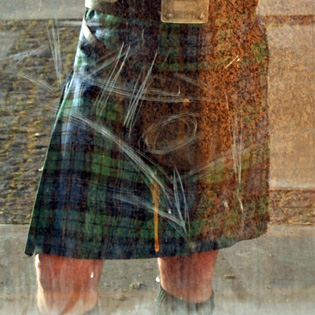
|
|
10 oz. 5 yard wool James Morrison Kilt by Heritage of Scotland. Made to measure. Campbell Ancient tartan. £151. It keeps its pleats very well.
|
|
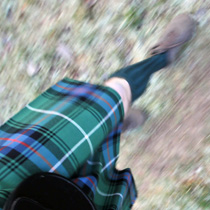
|
|
5 yard 'James Morrison" Kilt, 13 oz wool by Heritage of Scotland. Made to measure.
MacDonald of the Isles Hunting Ancient Old Colours.
£237 (£151 + £86 surplus tartan)
|
|
|
|
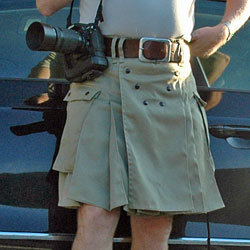
|
|
Utilikilt Standard Sand
|
Accessories
|
|
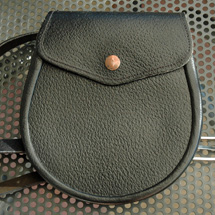
|
|
Plain day leather sporran - no annoying tassels.
|
|

|
|
Kilt belt & buckle
|
|
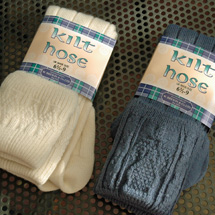
|
|
Kilthose. I strongly recommend Brevin&Co.
|
|
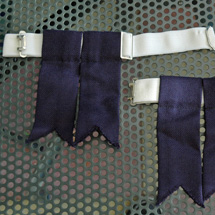
|
|
Garter flashes. Available in various colours.
|
|

|
|
Kilt pin
|
|
|
|
|
How do I get a kilt?
|
Take a flight to Edinburgh. It is a beautiful city. Or go on the
Internet. There are so many options.
|
|
What kilt and where to order?
I suggest your first kilt be a rather cheap one which you can really wear without taking too much care.
Later it is likely that you might go up the ladder and invest in more expensive kilts.
But the money you spend on your first budget kilt is never wasted.
|
1. The casual kilt. A lot of value for money
For your first kilt I
should recommend Heritage of Scotland (Gold Brothers). For around £49 plus £14 for shipping you can in about one week’s time have an 8 yard heavy weight (around 16 oz.) casual kilt delivered. If you buy for over £75 shipping is free.
This kilt does not quite feel like wool and no wonder because it is made of poly
viscose. It won’t last a life time but long. Before that it will stand up to a lot
of battering and you don’t have to care much about it. It keeps its pleats
extremely well. It is not for very formal events but neither is a pair of Hugo Boss or Tommy Hilfiger jeans.
It is not made in Scotland but in Pakistan, I suppose. But so it is with most of the clothing industry. Even high priced brands are today mass manufactured in countries where labor cost is low - like it or not.
To puristic kilt wearers a kilt manufactured outside Scotland might seem an almost mortal sin. But they may have to reconsider, unless the gap between the price of a kilt and that of other fine men's garments shall become too big and kilts therefore become really rare.
For walking along the coast, in the hills or mountains, in the woods, when
driving to the DIY market on a Saturday morning, going to the mall with your
wife, going sightseeing in a European capital or when mewing the lawn in your garden this type of kilt is just perfect.
Should it be ruined
it is good to know that it is cheap and fast to replace. I shouldn’t be
without one. The customer service
of Heritage of Scotland is extremely good, too.
Another reason the cheap kilt is
a good starting point is the sizing. How far is the kilt from being optimal
in waist and length? A good and cheap way to feel more assure when you order
your next and probably more expensive kilt.
You can have kilts cheaper than that. But ...
Living in the US: Sportkilts, Stillwaterkilts and USA Kilts may be worth looking at.
2. Up the scale and probably your second kilt
This is the kilt type of my choice and probably shall become yours too. Wool (13 or 16 oz.). About 5 yards. Custom made to fit you, still machine sewn but in Scotland. Many tartans available. Solid coloured too. Basic price level around £150. Pay £50 - £100 more and you have the same kilt in traditional eight yards. For a lot of tartans be prepared to pay additional 40-50 pounds or more, however, depending on tartan weight and tartan manufacturer.
Heritage of Scotland (prices include worldwide shipping)
Scotweb
In the US: USA Kilts
3. The traditional kilt. Best quality
Can be like a
piece of art. Hand-sewn and with the greatest sense for detail. But do you really need it? From a logical point of view hardly, but...like art collecting you know.
Prices easily exceed £400.
Hector Russell
Kiltmaker
Geoffrey Tailor
Kinloch Anderson
In the US:
Hector Russell and
Kinloch Anderson have branches in the US.
Matthew A.C. Newsome (USA) has specialized in box pleated kilts. He can also design your own tartan, should you wish so.
|
| |
4. The modern or contemporary kilt
The modern
kilt was launched in 2000 by Steven Villegas, founder of Utilikilts in Seattle. Despite no tartans and little resemblence to the traditional kilt the modern kilt it has become very popular among Americans with a Scottish heritage. Today quite a few enterprices make modern kilts, most of them situated in USA and Canada.
Jeans functions
Due to pockets no
accessories are needed. Goes into the washing machine and despite no tartans
very popular by Scottish descendants living in North America.
Alt.kilt (USA)
Utilikilts (USA)
Freedom kilts (Canada)
R-Kilts (Canada)
Business suit functions
Top quality reflected in price.
No pockets. You need a sporran and other accessories from the tartan kilt.
21th Century Kilts, Edinburgh
|
|
10 oz., 13 oz. or 16 oz.?
|
The fabric is
determined by its weight in oz.
13 oz. is medium weight and by far the
most universal and popular quality for kilts.
16 oz. is heavy weight
and might not be the optimal choice on a hot summer day. To most purists it
is a must, however.
10 oz. is light weight and in general
only recommended for kilts to be used in a hot climate. Most comfortable to wear, however, but might not be the optimal choice on a windy day.
I myself have two 10 oz. 5 yard James Morrison kilts (Heritage of Scotland) in Campbell Ancient and Caledonian tartan. Both are very good and I will use them a lot during summertime.
|
|
What about sizes?
For kilts
yards and inches are used. Recalculation is simple: 1 in. = 1 " = 2.54 cm.
1 ft. = 1 ' = 12 in. = 30.48 cm.
1 yd. = 36 in. = 3 ft. = 91.4 cm.
|
Waist size
For a kilt it is
about navel, i.e. higher than trousers. A casual kilt can be worn lower,
however. If you are between two sizes take the bigger one. As it is fastened
by means of straps and buckles there is some flexibility.
Hip size
Where you are at
the broadest. Take a lose measurement. For a readymade kilt you are not
asked.
Length
Off the peg kilts
are 'standardized' 24” or 61 cm long. Shall that fit you or not? Depending on how
high or low you are going to wear your kilt there is some give and take regarding the effective
length.
|
|
What is the correct
length of a kilt?
|
From the middle of
the knee cap to the top of the knee or even 1 inch above it. By no means
should it cover your knees – even if it is not uncommon.
|
|
How to determine the length of my first kilt?
|
My advice: Use a towel and a belt. Place yourself
right up in a good distance (2-3
meters) from a tall vertical mounted mirror. Start out
to see if 24” could be appropriate, otherwise adjust the length of the towel from the top of your belt and measure
out what is the ideal length.
Remember that you
shall probably use a belt one inch wider than you are accustomed to. That adds to the length.
I myself am 176 cm high = 5’9’’. Placed at navel a 24” kilt goes to the middle of my knee cap. In my case this length is the absolute maximum. A 21” kilt resting on my hips comes to about one inch above my knee cap, thereby still just acceptable. Fastened at navel it should look more like a mini kilt, however. In my case the perfect length is 22.5-23” . This just to indicate that
there is some flexibility – come in mind we talk casual kilt wearing, not national
dress.
|
|
Accessories
|
With a traditional
kilt you need “pockets”, which means a purse called a sporran. Go for a plain leather day sporran –
without the noisy and annoying tassels most sporrans on the market come with. For casual wear you might instead simply use a belt pack. I should recommend the sporran, however.
Semi dress sporrans often come with a front of seal skin. They are illegal in some countries. Dress sporrans are out of the question for casual wear.
A kilt looks at its
best together with a 2 ¼-2 ½ inch wide belt. An original kilt belt & buckle might be a little bit overdressed for casual wear, nevertheless it looks quite good and wide-enough ordinary belts are hard to find.
Long socks, called kilt hose are common with the kilt. To keep them stay up you might also need garter flashes.
Finding flashes overdressed for casual wear? Just remove the flashes from the garters. The garters themselves are invisible when your socks are folded down just below your knees as they should. And when you need the flashes put them on again.
For casual wear you might scrunch or roll your socks down.
White socks, whether long or short, are not to everybody’s taste; nevertheless most kilt hose are probably white or off white. The reason might be that they'll go with practically every kilt. Other popular colours are black, lovat green, lovat blue, bottle green, dark grey and navy.
In the summertime you might also replace the kilt hose by ordinary short socks. For casual wear the better solution, in my opinion, but traditionalists shall object to this.
If you buy a kilt pin, remember it is NOT intended to keep the layers of your kilt together. It should ruin your kilt in a short time! The kilt pin is for pure decoration.
All other
accessories are unnecessary for casual kilt wearing. Wearing of the special knife, the sgian dubh in your right (or left) kilt hose could in some countries even bring you into jail.
It is often cheaper
and by all means easier to buy the accessories together with your first kilt.
Price offs on kilt packages are rather common, which is fine. BUT sometimes the packages comprise items that you DON'T need.
|
|
What else
to wear with the kilt?
|
The kilt
not being national dress to you, keep it simple:
For the
upper part of your body wear what you should else be wearing, whether a regular
shirt, a polo or a t-shirt.
If you need
a jacket you’ll have to buy a special kilt jacket, probably an Argyle or a
Braemer. Forget about men’s ordinary jackets. They are too long and look
ridiculous with a kilt.
If it is merely a question of protecting yourself against
coldness a lot of short wind breakers will do the job efficiently and look nice
with your kilt.
On your feet wear shoes fitting the purpose. For casual functions and especially
when wearing modern kilts many men prefer heavy-duty shoes or walking boots.
|
| What colours? |
With a tartan kilt your shirt, socks, and everything else, should be solid coloured and in accordance with the colours of your kilt.
Leather items, sporran and belt should be either black or brown and match the colour of your shoes. Most common and therefore cheaper are black kilt belts and sporrans.
|
To wear a kilt you don't have to be Scottish. And you don't have to look Scottish. But always wear your kilt in an proper way. It is after all part of someone's national dress. That we at all times should keep in mind and respect.
[go to top of the page]
|
| HOME | WEB MASTER | GALLERIES | MY FIRST GEAR | ROLLEIFLEX AND MINOLTA | THE NIKON ERA | GOING DIGITAL |
| THE LOST WAR | LINKS | WRITINGS | KILT WEARING AND BUYING |
|